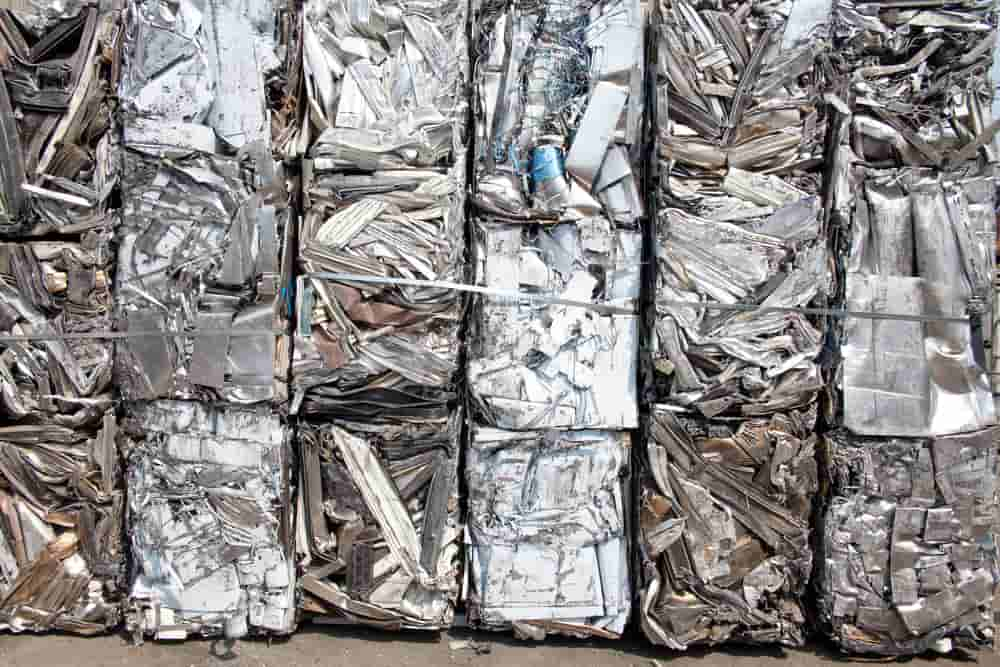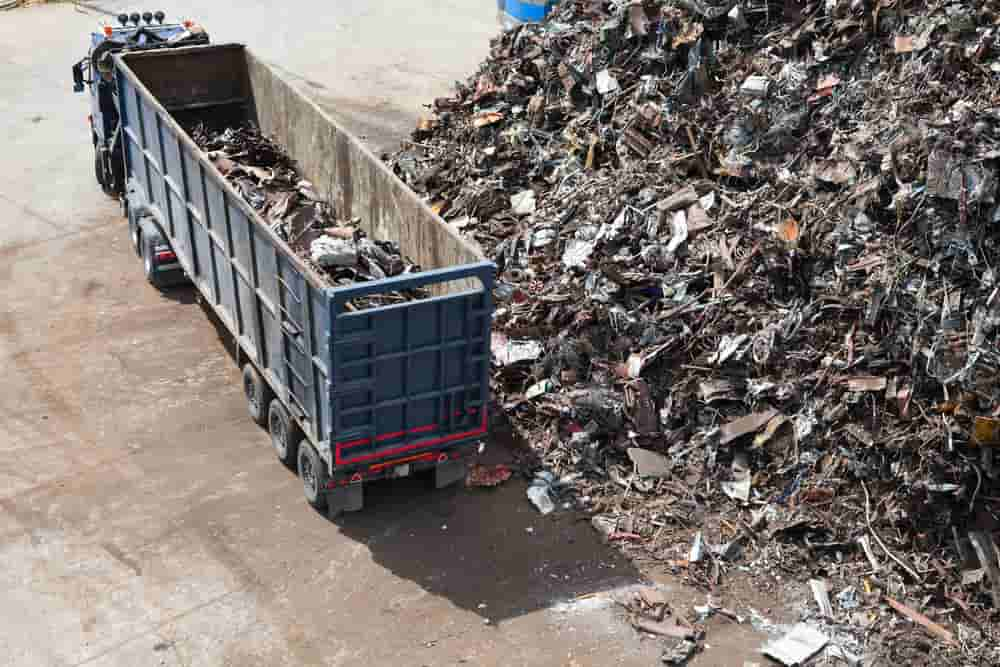In this article, we shall discuss metal recycling, and scrap metal won’t end up tossed in landfill.
Scrap metal has been recovered and reused since the early days of metalworking. Metal recycling is very efficient from an environmental and economic point of view.
Metals such as steel, iron, aluminum, and copper can be recycled indefinitely because their metallic properties are not lost by repeated melting and casting. Since recycling plastic and glass has become so difficult, it is important to remember that metal recycling is the traditional basis of many metal products.
The metal recycling industry specializes in recovering metals from obsolete items so that scrap metal does not end up in landfills. Instead, it is used as a raw material to create new goods.

Casting relies on metal recycling for sustainable and cost-effective sources of raw materials. According to the American Foundry Association, if recycled materials are not used.
A metal recycling center shows a scrap yard with piles of scrap metal
Not to be confused with a landfill, this scrap metal yard prepares old metals for metal recycling.
Type of scrap metal
The American Iron and Steel Institute divides scrap metal into three main categories.
Household srap
Domestic scrap refers to parts, pig metals, and scrap produced during rolling mill or foundry production. This type of waste has known chemical properties and can be easily combined with other raw materials and reprocessed on-site.
Prompt scrap
Instant scrap is produced during the manufacture of metal products. Like household waste, its chemical properties are known, and it is quickly returned to the plant for reprocessing.
Obsolete scrap
Abandoned scrap is recovered from sources such as used cars, household appliances, agricultural equipment, structural metals, and ships. The chemistry of the waste is largely unknown – the raw materials may have been used for decades or have previously been recycled and mixed with other materials. Obsolete waste must be sorted and processed before use.

Separating metals
The metal scrap recycling industry refines obsolete and ready-to-use unprocessed waste into first-class materials. Obsolete scrap collected from scrap metal dealers, auto recycling facilities, and industrial manufacturers is often sent to large recycling centers for processing. Upon arrival at the recycling center, scrap metal is irradiated, loaded onto an inbound conveyor, and cut into fist-sized pieces.
Then the metal waste should be separated into ferrous, non-ferrous, and non-ferrous materials. This process requires the scrap metal to be broken down into small pieces, so it can be effectively removed completely. Large scrap – waste that is too large to be crushed – is manually sized and sorted. The Scrap and Recycling Industries Institute (ISRI) has developed standard specifications for scrap commodities to help buyers and sellers accurately value processed scrap metal.
Ferrous metals
Ferrous metal alloys contain iron. Gray iron, malleable iron, and steel are examples of common ferrous alloys. Iron is magnetic, so the magnetic attraction is often used to identify ferrous alloys. Ferrous scrap is usually separated from non-ferrous materials using electromagnets.

Black steel scrap is widely used in cast iron and cast steel products produced by steel mills and foundries. According to the Steel Recycling and Recovery Rate Report, steel accounts for approximately 90 percent of all metals consumed in the United States and globally. The high consumption rate of steel makes recycling economically viable. Therefore, steel is the most recycled material in the world.
Electromagnetism is used to separate and transport ferrous metals from non-ferrous waste.
Non-ferrous metals
Any metal that is devoid of iron is referred to as non-ferrous. Non-ferrous metal alloys, such as copper-based alloys, are non-magnetic and corrosion-resistant.
They are also heavier than non-metals – an important factor in the separation process. A powerful vacuum cleaner or cyclone can effectively collect fine non-metallic debris while leaving non-ferrous alloys in place. Any problematic waste not properly separated by magnetic drums or cyclones is recovered in a manually operated “hand pick” line.
At this stage, ferrous metals are compressed and transferred to steel factories and foundries, and the rest of the materials continue with the process of separating non-ferrous metals.
The separation of non-ferrous metals uses eddy current, induction sorting, and additional manual sorting to sort various alloys with an emphasis on aluminum and copper.
Some non-ferrous metals often referred to as “specialty metals”, are rarely recycled because they are often used in rare or complex applications such as computer chips. Their relative value and volume do not justify the cost of separation and recovery.

Non-metallic materials
Any non-metallic material left at the end of the separation process is sent to a landfill. The metal recycling industry is trying to find new ways to effectively separate and use more of these materials to reduce waste.
Refinement and purification
After separation, metal scraps are subjected to secondary treatment. Recycling facilities divide obsolete waste into rough categories. However, the exact chemistry remains a mystery. To become a usable raw material, scrap must be refined to meet known specifications.
Scrap with similar properties is charged into a large furnace and heated to the appropriate melting temperature for the metal. During the refining process, slag is formed and floats to the top of the molten metal. Slag is the stone waste material that is separated from the metal during the refining process.
The molten metal is then tested and further refined to meet the required quality standards. Slag and oxidized impurities are discarded so that the metal is pure just before striking and pouring. When the molten metal acquires the required properties, it is transferred to a cooling vessel, ingot mold, or directly poured into molds for solidification.
Production
Scrap metal is shipped around the world for use in factories and foundries. Hundreds of millions of tons of scrap metal are consumed every year and start a new cycle of transformation into new products.
Foundries collect more raw materials from scrap yards and warehouses than virgin metal suppliers. According to AFS, iron foundries use 30 to 50 percent internal scrap and 40 to 50 percent external scrap. It includes ferrous materials from scrap steel that recycles cars.
Scrap Metal Recycling, and Sustainability

Obsolete scrap metal comes from sources such as scrap cars, household appliances, and ships. Watch the video to learn about a metal recycling center that specializes in scrap metal from the automotive industry.
Sustainability
Recycling metal waste reduces the environmental impact of metal production. In 2016, the Bureau of International Recycling (BIR) reported that 235 million tons of steel scrap were used as raw material for steelmaking, or 235 million tons of waste that did not end up in landfills.
The metal recycling process produces fewer emissions and requires much less energy than the production of new metal alloys. ISRI’s fact sheet on steel shows that recycling steel requires 56% less energy than producing it from iron ore. In addition, CO2 emissions can be reduced by 58% by using scrap iron instead of virgin material in steel production.
When secondary metals become available in the market, there is less demand for virgin ore mining. Metal recycling turns waste into useful resources, saving energy and reducing mining activities and thus environmental impacts.
Conclusion
All information mentioned above providing to the buyers who want to know and buy metal steel products with professional and innovative thoughts, and passionate and enthusiastic attitudes. We are eager to do what we do and strive to further the needs of our customers by providing quality products and services. And do not hesitate to any questions our support teams are available. For more information kindly visit our site.











Your comment submitted.